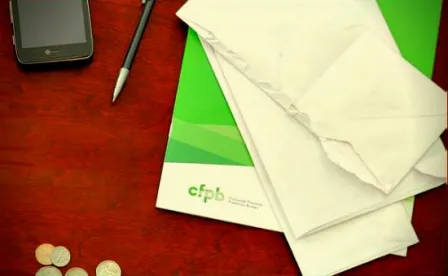In the wake of the COVID-19 pandemic, the Consumer Financial Protection Bureau (CFPB) issued a series of proposed amendments to the federal servicing regulations designed to assist mortgage borrowers impacted by the pandemic and to prevent a wave of “avoidable foreclosures.”1 The proposed amendments to Regulation X, issued in April 2021, required, among other things, additional intervention and communications regarding loss mitigation options, provided servicers with the ability to issue loan modifications upon the receipt of incomplete applications in certain instances, and prohibited the initiation of most foreclosure proceedings before January 2022.2
After the submission of over 200 comments from trade associations, industry leaders, foreclosure attorneys, customers, government entities, and consumer advocate groups, the CFPB modified the proposed amendments to reduce some of the burdens on servicers and to permit certain foreclosures to occur in the coming months. The CFPB’s Final Rule, issued on 28 June 2021 and set to become effective on 31 August 2021:
-
Clarifies servicers’ obligations with respect to notifying borrowers at the expiration of a forbearance period,
-
Delineates the steps servicers must take for delinquent accounts that are not already part of a forbearance or other loss mitigation effort,
-
Permits loan modifications without complete applications from consumers,
-
Allows foreclosures to begin in the near term in certain situations, and
-
Explains, in the commentary, how servicers may address escrow amounts in connection with COVID-19-related loss mitigation efforts.
Below, we highlight the key changes made by the CFPB in the Final Rule.
CHANGES TO THE EARLY INTERVENTION OBLIGATION
Currently, Regulation X requires servicers to attempt to make live contact with the borrower no later than the 36th day of delinquency and specifies the steps that servicers must take when discussing loss mitigation options.3 Under the CFPB’s initial live contact proposal, servicers would have been required to confirm whether the borrower’s account is in a forbearance plan and, if the borrower’s account was not, the servicer would have been required to expressly ask whether the borrower is experiencing a COVID-19-related hardship and provide information about available programs to assist the borrower.4 Where a borrower had already obtained a forbearance plan, the proposal would have required servicers to provide the borrower with the date on which the forbearance plan would end, details regarding available loss mitigation options available to the borrower, and the steps needed for the borrower to obtain additional loss mitigation assistance.5
In response to comments that it received, the CFPB slightly revised the early intervention obligations in the Final Rule in order to clarify the nature of the communication required. In particular, the Final Rule removes any requirement that the servicer specifically ask whether a borrower not in forbearance is experiencing a COVID-19-related hardship. Instead, the Final Rule requires servicers to advise such borrowers about the potential availability of forbearance plans regardless of the COVID-19-related hardship issue, and if a borrower indicates that he or she is interested in such information, provide additional detail about available programs.6 If a borrower states that he or she is not interested in such information, the servicer is relieved of the obligation to provide additional information.7 The CFPB noted that “by removing the requirement that borrowers take action to receive the information, and instead requiring that borrowers take action to be excluded, the rule helps to ensure that borrowers are not missing beneficial information due to any misunderstanding or hesitancy [to state that a COVID-19-related hardship exists], reducing the likelihood that target borrowers may miss this important information.”8
For those borrowers already in an active forbearance plan, the Final Rule requires servicers to communicate with the borrower between 10 to 45 days before the expiration of the forbearance and provide information regarding the date that the forbearance ends and other methods available to resolve any delinquency.9 The CFPB clarified that as part of this communication, servicers must “provide a list and brief description of each of the types of forbearance extension, repayment options, and other loss mitigation options made available by the owner or assignee of the borrower’s mortgage loan at [the time of the contact], and the actions the borrower must take to be evaluated for such loss mitigation options.”10 In promulgating the Final Rule, the CFPB rejected commentators’ requests that servicers provide a broader list of all loss mitigation options, regardless of whether they are applicable to the borrower or available from the servicer, and rejected commentators’ requests that servicers should have discretion in disclosing loss mitigation options that are potentially available.11 The CFPB noted that the revised early intervention obligations are “sufficiently tailored” to require servicers to provide information regarding options that are available to the borrower, rather than list all the loss mitigation options that an investor makes available to all borrowers.12
The Final Rule, therefore, provides servicers with additional clarity regarding the information to be provided to borrowers and the timing of when such information should be provided. According to the CFPB, the Final Rule’s early intervention requirements will ensure a smoother transition from forbearance plans to other types of loss mitigation programs and will avoid borrower confusion over loss mitigation program eligibility requirements. To avoid regulatory action and litigation risk, servicers will need to exercise reasonable diligence throughout the early intervention period and ensure that their staff can provide the appropriate information in all situations.
TREATMENT OF ESCROW ACCOUNTS
When discussing the comments received and its rationale for the Final Rule, the CFPB identified an important issue for COVID-19-related loss mitigation efforts that was not present in the initial proposal—escrow. Although the CFPB confirmed that Regulation X does not require servicers to run short-year analyses in connection with loss mitigation efforts,13 the CFPB stated in commentary that it “strongly encourages servicers to conduct an escrow analysis and issue a short-year statement or annual statement” as part of COVID-19-related loss mitigation efforts.14 The CFPB believes the running of a short-year analysis can provide historical information supporting escrow amounts and can avoid unexpected payment shock after entering into a loss mitigation program.15 Indeed, many servicers already perform escrow analyses as part of post-loan modification account maintenance and spread any escrow shortage beyond the typical 12-month repayment period in an effort to keep the payment affordable to the borrower.
Additionally, commentators asked for guidance to confirm whether Regulation X permits escrow shortage amounts or escrow advances to be included in a non-interest deferred balance.16 The CFPB noted that Regulation X does not prohibit servicers from seeking repayment of escrow shortage or escrow advances, but that Regulation X does not specifically address the situation of whether such escrow amounts can be included within a deferral.17 Though the CFPB did not direct how servicers should handle the situation, it stated that “Regulation X does not prohibit a borrower and servicer from agreeing to a loss mitigation option that allows for repayment of funds that a servicer has advanced or will advance to cover an escrow shortage.”18 Accordingly, the CFPB indicated that servicers and borrowers are permitted to work out an agreement as to the treatment of escrow advances and escrow shortages as part of COVID-19-related loss mitigation efforts.
In response to the CFPB’s guidance on escrow, servicers should expect more borrowers to request the inclusion of escrow shortage and escrow advance amounts in a deferral or loan modification so that the escrow account is completely balanced following the completion of loss mitigation relief. Servicers will need to determine whether such deferrals are consistent with investor guidelines, particularly related to escrow shortages, and if so, how the servicer would implement any deferral of unpaid shortages. Importantly, servicers should continue to identify ways to avoid borrower payment shock caused by escrow following the issuance of loan modifications.
USE OF INCOMPLETE APPLICATION FOR LOSS MITIGATION ANALYSIS
Under existing regulations, servicers generally cannot make a loss mitigation offer to a borrower based on an incomplete application unless permitted by the exceptions set forth in Regulation X.19 The CFPB’s initial proposal would have authorized servicers to issue loan modifications based on incomplete applications where the borrower met certain criteria. The Final Rule incorporates the proposed rule with only minor revisions.20 Specifically, servicers may issue a loan modification for borrowers that suffered a COVID-19-related hardship where the following criteria are met:
-
The loan modification extends the term of the loan no more than 480 months, and for the entire modified term, does not cause an increase in the required principal and interest payment beyond the amount of principal and interest required prior to the loan modification;
-
If the loan modification permits the borrower to delay paying certain amounts until the loan is refinanced, the mortgaged property is sold, the loan modification matures, or, for a mortgage loan insured by the Federal Housing Administration, the mortgage insurance terminates, then those amounts do not accrue interest;
-
The loan modification is made available to borrowers experiencing a COVID-19-related hardship;
-
Either the borrower’s acceptance of the loan modification or acceptance of the loan modification through satisfaction of a trial plan must resolve any preexisting delinquency; and
-
Fees are not charged in connection with the loan modification and all existing late charges, penalties, and fees incurred on or after 1 March 2020 must be waived from the account promptly upon acceptance of the loan modification.21
Although the Final Rule will permit servicers to more easily process loan modification applications as the forbearance period closes, significant litigation risk exists. Servicers will need to continue to closely scrutinize how they can implement the loss mitigation provisions to avoid the historic litigation issues that arose out of the Home Affordable Modification Program (HAMP). Indeed, litigation arising from the Final Rule is likely to mimic HAMP-related litigation, and could include disputes regarding confusing or conflicting communications about relief options (or lack of communication about certain options), eligibility determinations, the affordability of modifications offered, and the impact of unpaid escrow amounts owed on payments following a modification.
IMPLEMENTATION OF SPECIAL COVID-19 EMERGENCY PRE-FORECLOSURE REVIEW REQUIREMENTS
In the initial proposal, the CFPB sought to impose a requirement that servicers wait until after 31 December 2021 to issue the first foreclosure notice or filing in all but a very limited number of circumstances.22 The Final Rule, however, replaces the general ban on foreclosures with the imposition of a less restrictive set of procedural safeguards, permitting certain foreclosures to occur in the near term.23
Though still concerned that borrowers and servicers have sufficient time to work through loss mitigation issues in advance of any foreclosure, the CFPB’s Final Rule acknowledged that foreclosure may be an appropriate action in several circumstances.24 This “more narrowly tailored approach” recognizes that there are some borrowers who had significant delinquencies prior to, and unrelated to, the COVID-19 pandemic and who were already referred to foreclosure, but these foreclosures may have been paused as a result of the pandemic.25 To that end, once the Final Rule becomes effective on 31 August 2021, a servicer may initiate the first step for a foreclosure proceeding if the account: (1) meets the general foreclosure requirements of 12 CFR 1024.41(f)(1); (2) became more than 120 days delinquent on or after 1 March 2020 or the statute of limitations for foreclosure proceedings expires after 1 January 2022; and (3) meets one of the delineated procedural safeguards.26
The procedural safeguard requirement—which will remain in place until 1 January 2022—is met if the servicer can show:
-
The borrower has submitted a complete application, remains delinquent, and (a) the borrower does not qualify for any loss mitigation options, (b) the borrower rejects all loss mitigations options offered by the servicer, or (c) the borrower fails to perform on an agreement under a loss mitigation option;
-
The property has been abandoned; or
-
The servicer takes the required steps to make live contact with the borrower and the borrower is deemed non-responsive.27
As such, the Final Rule only applies to those accounts that became 120 days delinquent on or after 1 March 2020, or those accounts where the foreclosure statute of limitation expires after 1 January 2022.28 Accounts that do not fit those criteria are not subject to the procedural safeguard requirements of the Final Rule.29 Stated differently, if an account was 120 days past due before 1 March 2020 (and has remained that way), or has an expiring foreclosure statute of limitation before 1 January 2022, a servicer may initiate foreclosure proceedings as long as the servicer complies with all other legal requirements.30
The Final Rule seeks to strike a balance between providing borrowers involved in loss mitigation efforts or suffering from COVID-19 related issues the necessary time to evaluate loss mitigation options, while allowing servicers to proceed with foreclosures in situations where accounts were ripe for foreclosure before the pandemic, for those properties that have been abandoned, and where borrowers are unresponsive to servicers’ attempts to resolve the delinquency. To the extent that servicers choose to initiate foreclosure procedures as permitted, servicers should ensure that information regarding the account status, attempts to reach the borrower, communications sent, and evidence regarding compliance with the procedural safeguards is well documented.
CONCLUSION
In response to significant industry feedback, the CFPB’s Final Rule appears to strike a better balance between protecting borrowers impacted by COVID-19 and permitting servicers to begin foreclosures on loans that were delinquent prior to the pandemic, for homes that have been abandoned, for nonresponsive borrowers, and for those borrowers who have gone through a complete loss mitigation evaluation and have been denied. The CFPB’s concessions aside, the Final Rule still requires significant efforts by servicers to ensure that eligible borrowers are evaluated for loss mitigation relief. Indeed, CFPB included new commentary not present in the initial proposal that indicates the CFPB may expect servicers to take efforts to address escrow shortages and escrow arrearages as part of the COVID-19-related loss mitigation efforts to ensure that borrowers are not subject to escrow-related payment shock. The Final Rule leaves little doubt that compliance with the new obligations will be a priority for the CFPB, and that the CFPB expects that servicers provide any borrower experiencing a COVID-19-related hardship with the opportunity to participate in loss mitigation efforts. Servicers should be prepared for regulatory actions and litigation if foreclosures proceed without compliance with the Final Rule.
1 See here, Protections for Borrowers Affected by the COVID-19 Emergency Under the Real Estate Settlement Procedures Act (RESPA), Regulation X, 86 Fed. Reg. 18,840 (proposed Apr. 5, 2021).
2 The K&L Gates LLP alert on the CFPB’s proposed rules can be found here.
3 12 C.F.R. §1024.39(a).
4 86 Fed. Reg. at 18,878; read more here.
5 Id.
6 86 Fed. Reg. at 34,899.
7 Id.
8 Id. at 34,861.
9 Id. at 34,864.
10 Id. at 34,849.
11 Id. at 34,863.
12 Id.
13 Id. at 34,866.
14 Id.
15 Id.
16 Id. at 34,867.
17 Id.
18 Id.
19 12 C.F.R. § 1024.41(c)(2)(i).
20 86 Fed. Reg. 34,869.
21 Id. at 34,899-900.
22 86 Fed. Reg. at 18,879.
23 86 Fed. Reg. at 36,849.
24 Id. at 36,900.
25 Id. at 34,880-81.
26 Id.
27 Id. at 36,900.
28 Id. at 36,884.
29 Id.
30 Id.






 />i
/>i
